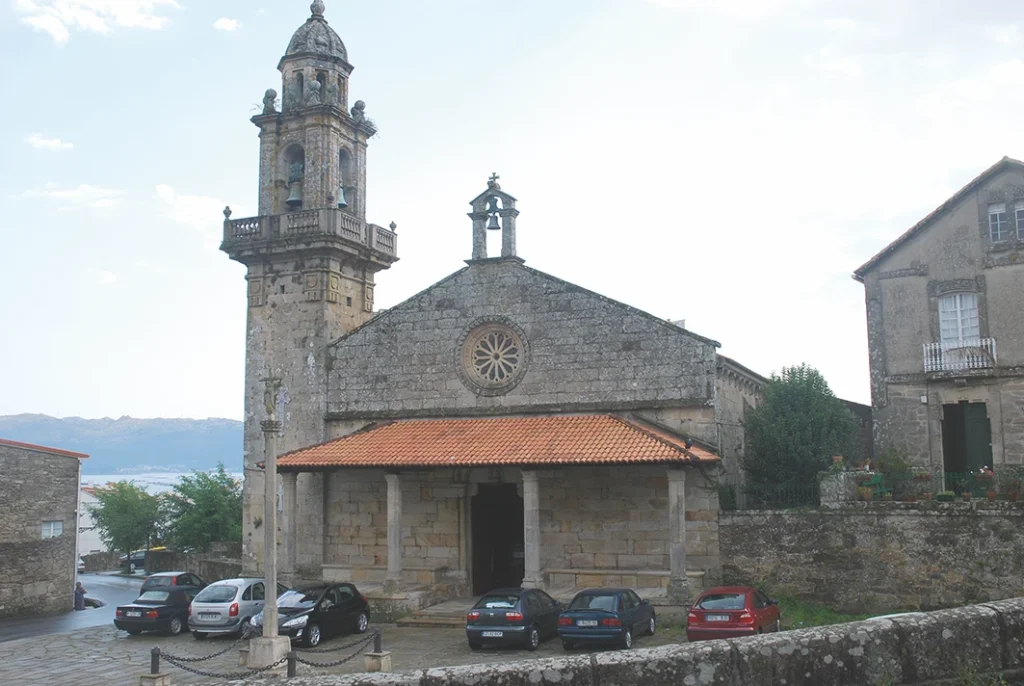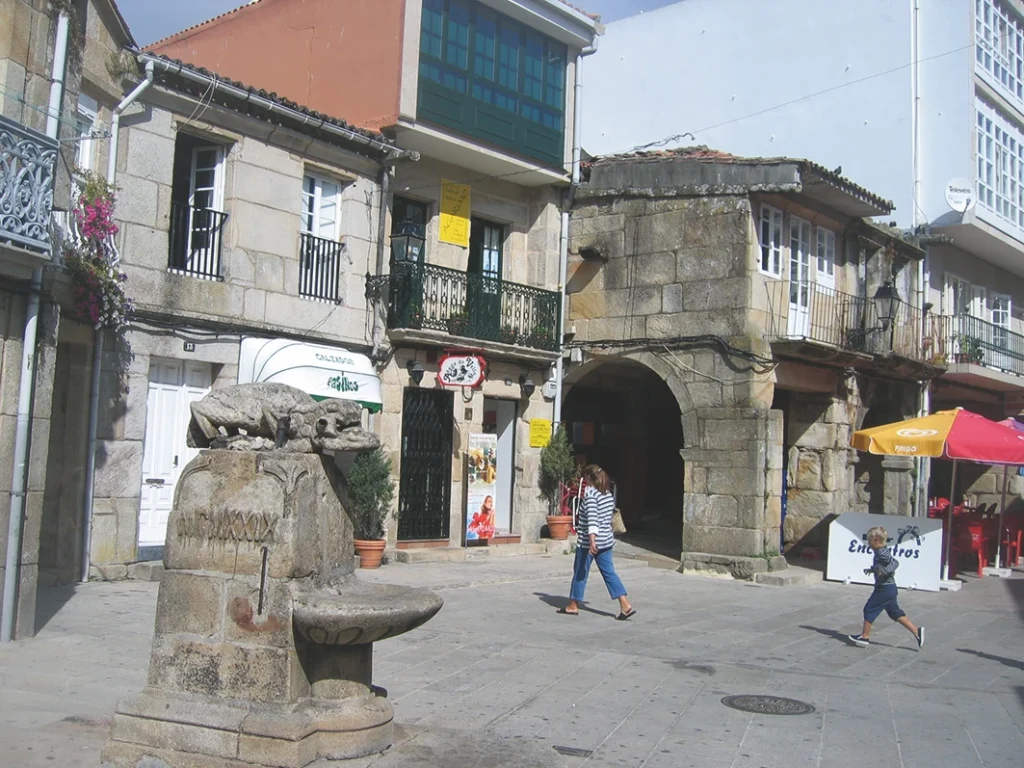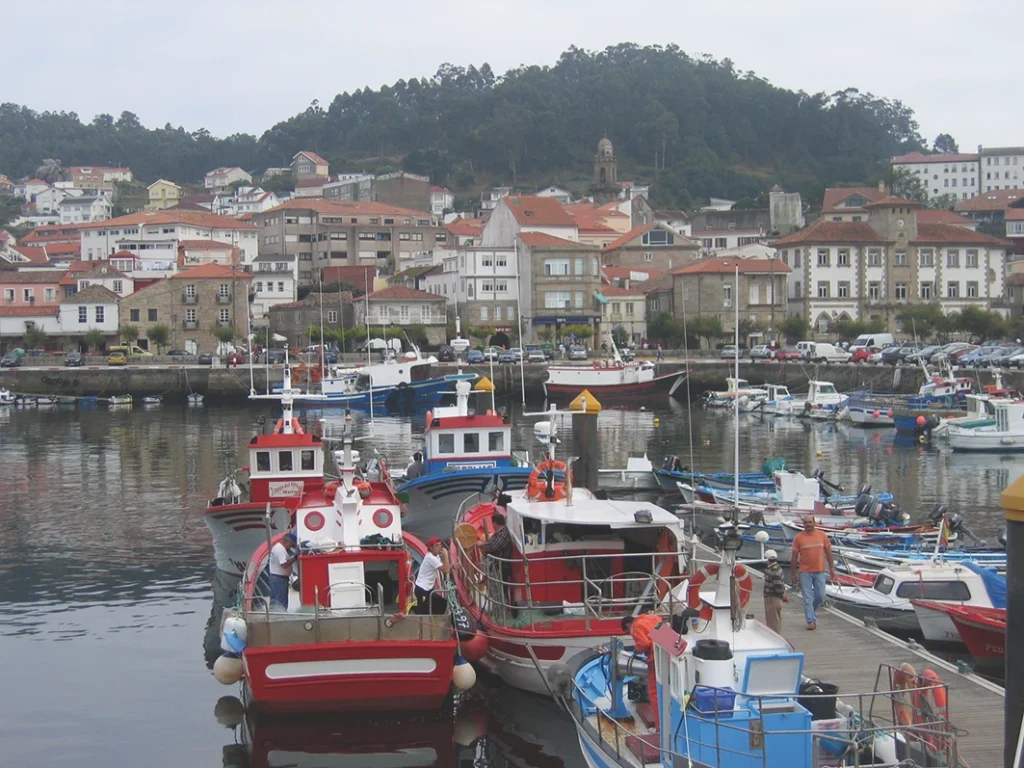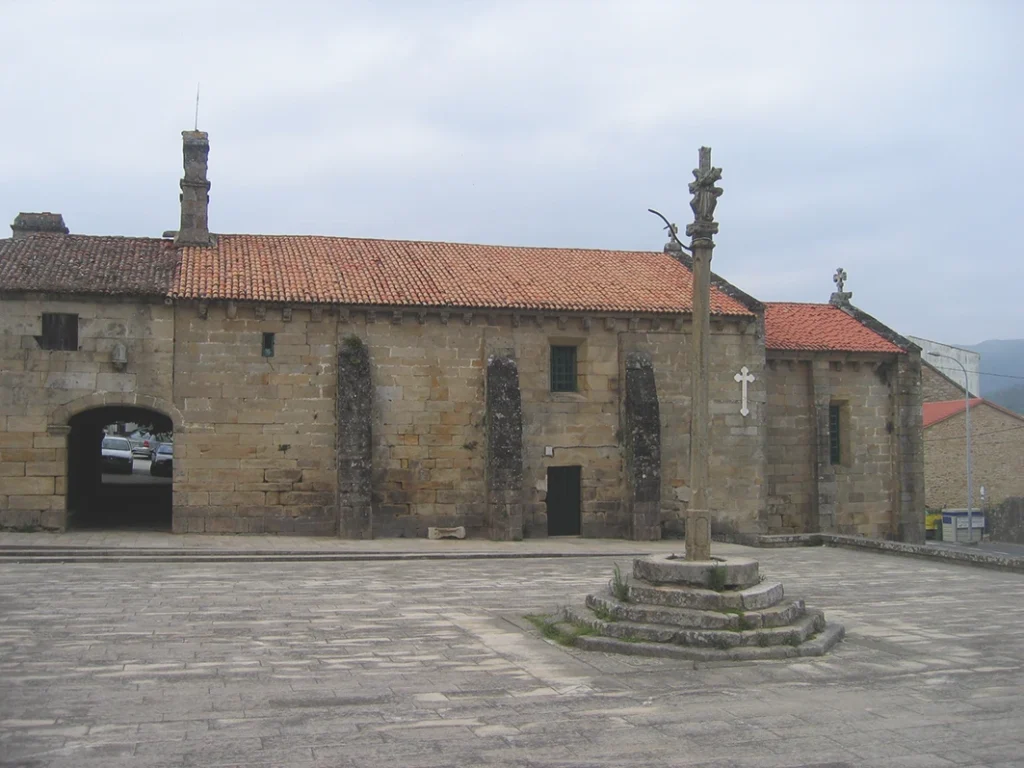
History
The oldest document to mention the town is a royal privilege issued by king Sancho IV, which granted dominion over a large territory from the mouth of the river Xallas to the mouth of the river Tambre.
Muros changed hands in the late 13th c. and was made part of the properties of the archbishop of Santiago. Like may other Galician ports, it was frequently attacked by pirates, and so in the 16th c. a wall was built around the town to divide it into two districts: A Cerca within the walls and A Xesta outside. The main entrance gate was located where the Town Hall is today. One of the streets is still called Porta da Vila (town gate).
The defences did not stop the port from being attacked by French pirates in 1544. French troops also razed the town in March 1809. The arrival of the Catalan promoters, who set up several salting factories in the town and on the outskirts, boosted the economic and commercial development of the port.
Muros is now one of the most interesting towns of the region in architectural terms. The town grew from the coast –the local centre of economic activity– to the interior. The geography of the area dictated the layout of the town, which extended from north east to south west.
Route on foot around the town
Start the route at the plaza of O Curro da Praza, where you can see the Town Hall, a modern building built in 1958. The arches are an attempt to imitate the town’s Gothic past. The plaza also has some fishermen’s houses with colonnades of pointed or semicircular arches, with stone balconies resting on brackets with iron railings.

Leave the plaza and take the Rúa Camiño Novo to the collegiate church of Santa María do Campo, which is now the parish church of San Pedro. What had previously been a Romanesque church was transformed by order of the archbishop Lope de Mendoza into a splendid Gothic Basilica in the late 14th c. Remnants of its Romanesque past can be seen in the main entrance with archivolts, the rose window and the corbels. The bell tower was built in the Baroque style.
The building itself is made up of a broad nave divided into five sections and a gabled roof, with pointed arches that rest on cluster columns on each side and several Gothic side chapels that open out onto the nave. The chancel has a beautiful cross-ribbed vault with diagonal ribbing supported on corbels in the corners. Some old tombs can be seen inside the church.
Head back to the Praza do Concello and set off into the old town centre via the Rúa da Gracia, which takes you to the main street called the Rúa Real. To the right there are some lanes that go down to the marina: Venus, Ancha, Soedade, Anxo, Rosal, Saúde etc. Then you arrive at the attractive Placita de Santa Rosa or del Cristo, with an 18th c. calvary in the middle. From here go to the Praza da Pescadería Vella, where you can see some old houses with colonnades. One notable feature here is the fountain of A Salamántiga (the Salamander) built in 1929.

Go back to the main street, which here is called the Rúa da Xesta, in reference to the old fishermen’s district of the same name. To the left you can see the food market, what used to be the Praza Maior, and further on in a narrow street to the left is the medieval Arco de Don Diego. The street name is a reference to Diego de Muros, which was the name used by three bishops of this town. The most famous one is Diego de Muros III, bishop of Mondoñedo and Oviedo and the promoter behind the construction of the Royal Hospital of Santiago (now the Hostal dos Reis Católicos). At the end of the Rúa A Xesta is the chapel of Santa Isabel or de los Remedios, which has an interesting 16th c. calvary in the courtyard

You return from here to the starting point along the Avenida da Mariña or Castelao, to see the port area and the old arcaded houses that are still preserved here.
It’s worth paying a visit to the old parish church of San Pedro, at the high point of the town next to the cemetery. It is the oldest church in Muros. The only remaining parts of the church now are the chancel with an interesting collection of corbels. The chapel of Nosa Señora da Gracia, attached to the south side, used to be the sacristy.

The sanctuary of A Virxe do Camiño can be seen at the entrance to Muros on the road from Noia. Built in the Gothic style in the mid-16th c., it has a long nave in four sections and a chancel with a cross-ribbed vault.
There is beach opposite the church with a bridge that takes you to Muíño do Cachón: a tide mill built in the 19th c. that was recently restored and converted into a cultural and exhibition centre.